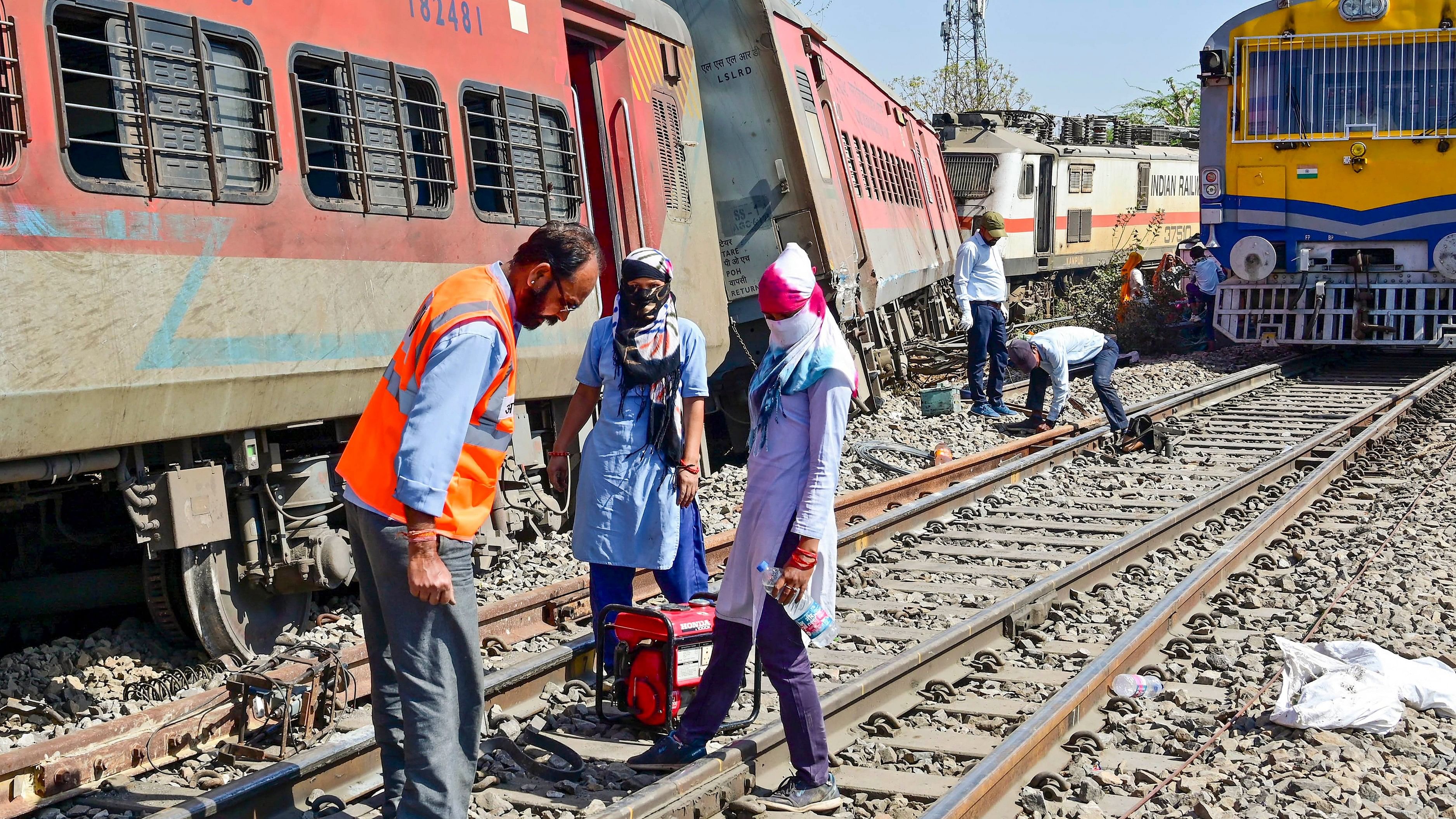
Restoration work underway after four coaches of the Sabarmati-Agra superfast train derailed, in Ajmer district, Monday, March 18, 2024.
Credit: PTI Photo
New Delhi: A preliminary probe into the derailment of Sabarmati-Agra Superfast Express near Ajmer has revealed that the loco pilot overshot the red signal after which it collided with two rear wagons of a freight train.
Four coaches of the passenger train, which was on its way to Agra, derailed near the Ajmer station on Monday. No loss of life was reported in the incident.
The joint probe report, signed by seven experts, said that train number 12458 (Sabarmati-Agra Superfast Express) departed from Ajmer at 00:50 and while approaching towards Madar station, the driver overshot the red signal and the train collided with two rear wagons of a freight train which was passing through at an intersection/crossover.
Due to this, four coaches of the train and its engine derailed causing a huge disruption to the train operations in both up/down direction for several hours. The report said that no casualty or injuries were caused by the incident, though the train’s speed at the time of collision was 50 km per hour.
The loco pilot too admitted in his submission that before entering the Madar station, he saw the first signal in double yellow position and second in single yellow.
The driver further said that when he saw the third signal in the red position, he applied an emergency brake but by the time, the train collided with the rear end of the freight train.
According to experts, a driver, as per the norm, has to apply brakes when he gets the first signal in double yellow position as the train takes time to stop after covering about 500 to 600-metre distance due to its momentum.
“The first signal in double yellow position is an indication to the driver that he has to apply the brake as there is an obstruction on the track ahead. In such a situation, the next signal is kept yellow and the third one is red,” a retired loco pilot said.
He added, “The driver in his version to the joint report committee has admitted that he saw the first signal in double yellow position. But he hasn’t specified why he didn’t apply the brake then.”
Loco pilots said that overshooting a red signal (also called Signal Passed At Danger or SPAD) occurs when drivers lose focus and indulge in other activities. “Sometimes drivers doze off too due to fatigue and SPAD occurs. There are cases in which mental stress or family issues bog their mind so much that they miss signals,” a loco pilot said, requesting anonymity.
“Though the assistant loco pilot’s job is to alert the loco pilot about all these things but sometimes despite that, SPAD happens when drivers go absent-minded,” he added.
The SPAD report in this case suggests that the driver was living alone away from his family.